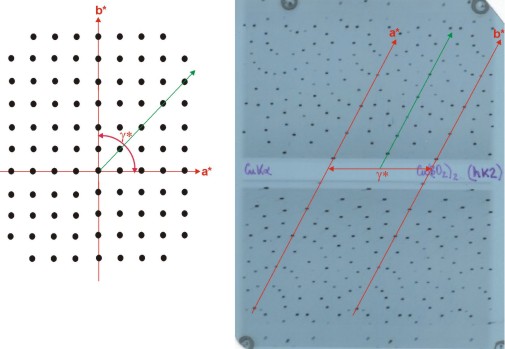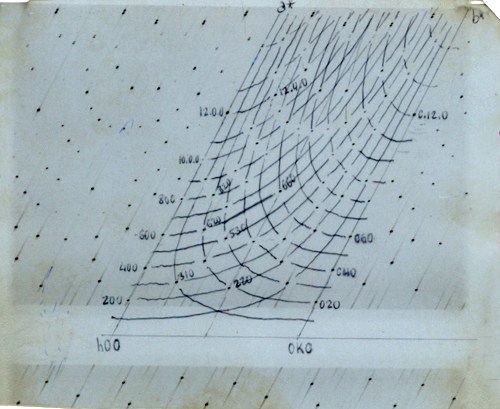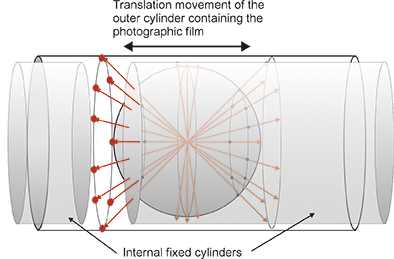This deformation is such that any reciprocal line, passing through the centre of the reciprocal lattice, appears in the diagram as a line of spots lying on a straight line with slope 2. Furthermore, the angle between two reciprocal lines that intersect each other in the reciprocal lattice is shown in the diagram as the distance between two parallel lines, as it is shown in the figure below:

Geometric
distortion of a reciprocal plane (figure on the left) when
collected on a Weissenberg diagram (figure on the right).

Template
drawn on a real Weissenberg diagram for the interpretation of the
diffraction spots. These templates were used for the measurements of
diffraction intensities in a manual photometer, so one could identify
all spots with their Miller indices.

